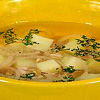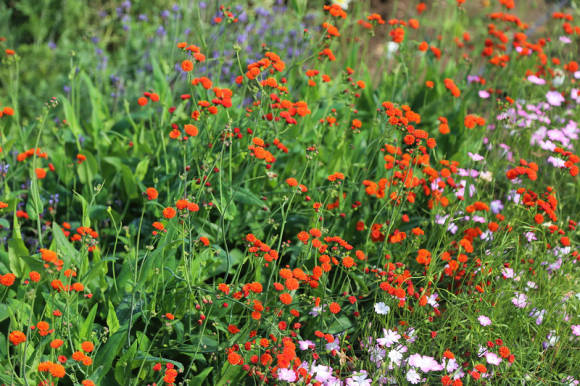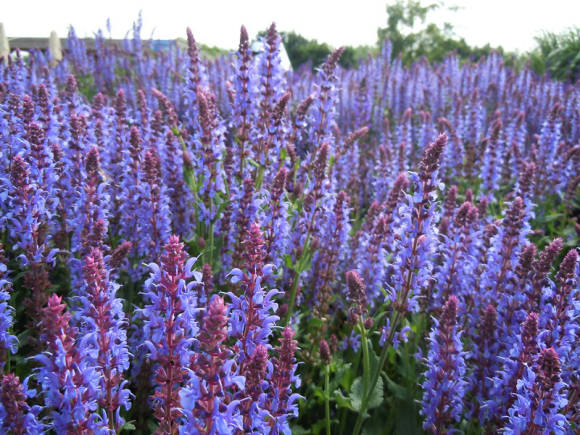
Phlebodium golden (Phlebodium aureum) has elongated and slightly wavy at the edges lobed leaves of a pleasant blue-green hue and pubescent golden "paws" of rhizomes creeping on the substrate. It will serve as an excellent choice for beginners and more experienced florists. The ability to tolerate rather low light and relatively easy maintenance allow it to be used in phytodesign not only for residential premises, but also for offices. When purchasing a small plant, and this is most often the well-known Blue Star fern, one must be prepared for the fact that, under favorable conditions, the fern can quickly turn into a real giant with a leaf span of up to 1-2 m.
See also page Phlebodium.
Illumination. Phlebodium prefers bright, diffused light. In summer, protect it from direct sun exposure to prevent the leaves from getting burned. On a sunny windowsill, place a fern behind other plants or slightly to the side of a window so that only oblique sunlight falls on it. In winter, you can expose the phlebodium to the lightest windows or under bright illumination. Although this fern tolerates shade quite patiently, all its beauty is manifested only in bright light - large and wavy frond with a large number of segments grow, the leaves acquire a characteristic bluish tint. With a lack of light, the leaves will remain small, growth will stop, and leaf fall may begin. In winter, in a warm place, provide the plant with a 12-hour light day with a backlight.
About lamps - in the article Lamps for plant illumination.
Air temperature and humidity... Phlebodium grows well all year round at a normal room temperature that is comfortable for humans. With a lack of light in winter, it is advisable to lower the temperature of the content to + 16 ... + 18 ° C, do not allow cooling below + 10 ° C. A temperature of + 5 ° C is already striking for this fern and causes the death of the plant.
Phlebodium prefers high humidity, although it tolerates dry air quite well. Keep it in a damp room like a kitchen or bathroom. As the heating season approaches, spray the fronds and air near the plant several times a day, or use a humidifier, but not close to the plant. Planting indoor plants in groups will also contribute to higher air humidity around them.
Watering. When watering, remember about the natural habitat and nature of the fern - it lives on the branches of trees in the rainforest, so it prefers frequent watering, but does not like to stand in water or damp soil. The correct irrigation regime will be easy to select if the soil is well drained throughout the volume, this will provide a quick drain of excess water and free air access to the roots. Too dense substrate will lead to waterlogging and root rot. Water with warm, settled and soft water after the top layer of the soil has dried, trying not to get on the pubescent rhizomes, so as not to spoil their appearance.
Read more about watering in the article Watering rules for indoor plants.

Soil and transplant... For phlebodium, ready-made soil is suitable for epiphytic plants - orchids or bromeliads. You can prepare the substrate yourself by adding a large amount of drainage materials, pieces of bark or perlite (1/3 of the volume) to the universal soil or soil for decorative deciduous plants. The root system of the fern is shallow, so preference should be given to low pots, bowls. After the purchase and in the future, once every few years, the fern is transplanted only by careful transfer into slightly large pots (2-3 cm wider in diameter). Large adult specimens can be neatly separated during transplantation. On the surface of the soil, rhizomes covered with bristles are located - these are not roots, but plant stems, they cannot be buried.
Read more in the article Transplanting indoor plants.
Top dressing... Like many other epiphytes, phlebodium in their natural habitat had to adapt to low levels of nutrient intake. It will be enough to apply from April to September fertilizer for cacti in a half dosage. The introduction of large doses of fertilizers will cause poisoning and death of the plant.
Reproduction. You can get phlebodium from spores, but this process is long and requires special conditions. First, tiny outgrowths will grow out of the spores - the gametophytic generation. Male and female germ cells are formed on them, which can merge in a humid environment. And only from the resulting zygote, the next generation will develop over time - a sporophyte, a familiar fern.
At home, phlebodium is propagated by dividing the rhizomes during transplantation. A fragment of the rhizome with several leaves is carefully cut off with a clean tool, the cuts are sprinkled with crushed coal, dried a little and transferred to a separate pot, leaving the rhizomes to lie on the surface of the soil without deepening them.
Diseases and pests. The plant, with proper care, is practically not susceptible to disease.
- Roots can rot from waterlogging.
- From a lack of light, the fern degrades and loses its leaves.
- Sometimes it is affected by the scabbard.
About plant protection - in the article Houseplant pests and control measures.









